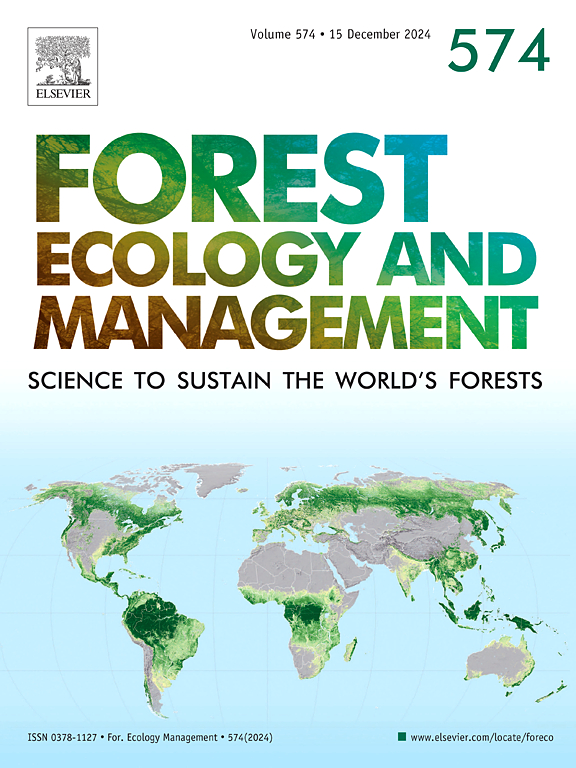Hotter drought increases population levels and accelerates phenology of the European spruce bark beetle Ips typographus
IF 3.7
2区 农林科学
Q1 FORESTRY
引用次数: 0
Abstract
Bark beetle-induced tree mortality has increased strongly in Europe in recent years. Bark beetle populations are highly sensitive to temperature, and drought weakens tree defenses against beetle attacks. Yet, the compound effects of drought and heat (termed hotter drought) remain poorly quantified, even though climate change increases their joint occurrence. Here, we analyzed data from a regional-scale network of pheromone-baited Ips typographus traps (158 traps across 7 Mha in southeast Germany, with 67.5·million beetles caught between 2015 and 2021), contrasting the unprecedented hotter drought period of 2018–2020 with non-drought years. Our objectives were (i) to assess the effect of hotter drought on bark beetle population dynamics, (ii) to quantify changes in spatial patterns during hotter drought, and (iii) to investigate how well trap data can explain observed tree mortality. Bark beetle population levels were strongly driven by temperature and drought, with an annual increase of approximately 2000 beetles per trap per °C under drought conditions (SPEI = −1). Furthermore, critical phenological thresholds were reached 7 days earlier for aggregation and 4 days earlier for peak swarming timing per °C increase in temperature. In drought years, I. typographus population levels were autocorrelated across hundreds of kilometers. Trap data explained between 37 % and 49 % of observed bark beetle mortality, highlighting that pheromone trap networks are a useful tool for monitoring and managing forest risk. We conclude that hotter drought intensifies and extends mass outbreaks of the European spruce bark beetle, suggesting the emergence of novel patterns of disturbance.
求助全文
约1分钟内获得全文
求助全文
来源期刊

Forest Ecology and Management
农林科学-林学
CiteScore
7.50
自引率
10.80%
发文量
665
审稿时长
39 days
期刊介绍:
Forest Ecology and Management publishes scientific articles linking forest ecology with forest management, focusing on the application of biological, ecological and social knowledge to the management and conservation of plantations and natural forests. The scope of the journal includes all forest ecosystems of the world.
A peer-review process ensures the quality and international interest of the manuscripts accepted for publication. The journal encourages communication between scientists in disparate fields who share a common interest in ecology and forest management, bridging the gap between research workers and forest managers.
We encourage submission of papers that will have the strongest interest and value to the Journal''s international readership. Some key features of papers with strong interest include:
1. Clear connections between the ecology and management of forests;
2. Novel ideas or approaches to important challenges in forest ecology and management;
3. Studies that address a population of interest beyond the scale of single research sites, Three key points in the design of forest experiments, Forest Ecology and Management 255 (2008) 2022-2023);
4. Review Articles on timely, important topics. Authors are welcome to contact one of the editors to discuss the suitability of a potential review manuscript.
The Journal encourages proposals for special issues examining important areas of forest ecology and management. Potential guest editors should contact any of the Editors to begin discussions about topics, potential papers, and other details.
 求助内容:
求助内容: 应助结果提醒方式:
应助结果提醒方式:


